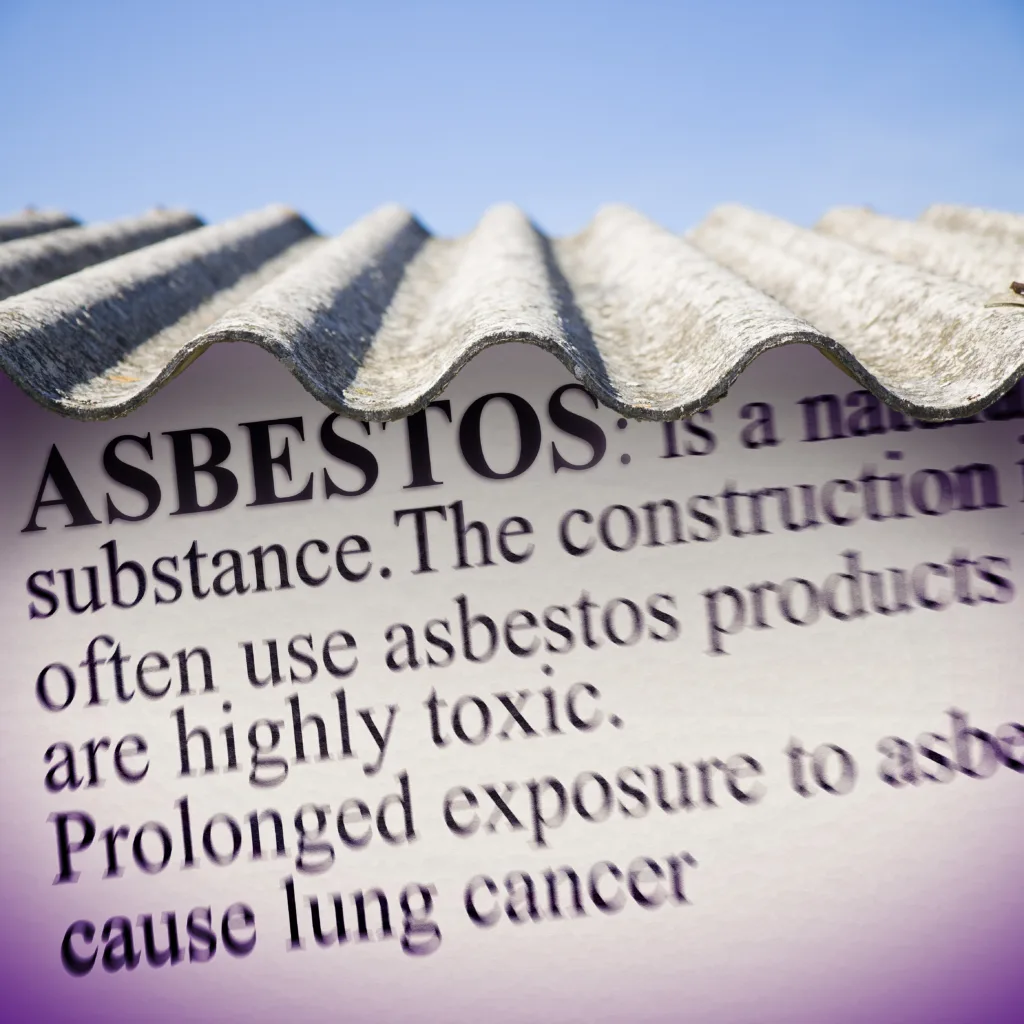The prognosis of mesothelioma lung cancer depends on the specific type of cancer diagnosed. Mesothelioma is medically different from lung cancer. Both mesothelioma and lung cancer can result from asbestos exposure, but only one type of mesothelioma – pleural mesothelioma – affects the lining of the lungs and chest cavity. Mesothelioma cancer develops in the cells that make up this lining, called mesothelial cells.
Because pleural mesothelioma affects the lungs, it’s sometimes mistakenly called mesothelioma lung cancer. But mesothelioma can develop in the lining of other organs. Peritoneal mesothelioma affects the lining of the abdomen, pericardial mesothelioma affects the lining of the heart, and tunica vaginalis affects the lining of the testicles. All these cancers originate from the mesothelial cells.
Asbestos-related lung cancer develops within the lung tissue itself instead of in the lining. It develops from the cells in the lungs.
Both mesothelioma and asbestos-related lung cancer are caused by exposure to asbestos. Asbestos is a naturally occurring mineral that was commonly used in various industries for its heat-resistant and insulating properties. However, it was later discovered that asbestos exposure could lead to serious health risks, including mesothelioma and lung cancer.
If you were diagnosed with mesothelioma or lung cancer related to asbestos exposure, you may file a claim against asbestos manufacturers or others who exposed you to asbestos.
An experienced Chicago mesothelioma attorney from Vogelzang Law can advise you about whether you have a claim. Our lawyers have two decades of experience handling mesothelioma and lung cancer cases connected to asbestos exposure. An experienced attorney can establish a link between your mesothelioma and the source of asbestos exposure, and from there navigate the complicated mesothelioma claims process.
What Is the Prognosis for Pleural Mesothelioma?

The prognosis for pleural mesothelioma can vary significantly depending on the stage at which doctors diagnosed the cancer, the cell type of the tumor, the patient’s overall health, and the available treatment options.
- Early stage diagnosis: If doctors diagnose pleural mesothelioma at an early stage before it spreads, the prognosis may improve. Surgical interventions, such as extrapleural pneumonectomy (EPP), which involves removing the affected lung, portions of the diaphragm, and the linings of the lung and heart, or pleurectomy/decortication (P/D), which involves removing part of the lining of the lungs and any tumors or cancerous tissues, may offer a chance for longer-term survival. Chemotherapy and radiation generally accompany these surgical treatments.
- Late-stage diagnosis: Unfortunately, doctors often diagnose pleural mesothelioma at an advanced stage, which can significantly hurt the prognosis. At advanced stages, the cancer spreads to other parts of the chest or distant organs, making it more challenging to treat. A patient’s prognosis tends to dim in these cases.
- Cell type: The cell type of the mesothelioma tumor also plays a role in prognosis. Epithelioid mesothelioma, a subtype, generally has a better prognosis compared to more aggressive sarcomatoid or biphasic mesothelioma.
- Patient’s overall health: A patient’s overall health and ability to tolerate treatment can influence their prognosis. Patients who are in good health and can withstand aggressive treatments like surgery, chemotherapy, or immunotherapy may have better outcomes.
- Treatment options: Advances in treatment options, including surgery, chemotherapy, radiation therapy, targeted therapy, and immunotherapy, have improved the prognosis for some patients with pleural mesothelioma. Doctors base treatment plans on the individual’s specific case and stage of the disease.
- Response to treatment: How well a patient responds to the chosen treatment can also affect their prognosis. Some patients may achieve a partial or complete response to treatment, which can extend survival.
Pleural mesothelioma is a challenging cancer to treat, and the prognosis is often less favorable compared to other cancers. However, ongoing research and advancements in treatment options continue to provide hope for improved outcomes.
If you or someone you know was diagnosed with pleural mesothelioma, consult a medical specialist who can provide personalized information about prognosis and treatment options based on your case. Early detection and timely treatment can have a positive impact on the outcome, so seek medical attention as soon as symptoms arise.
Like mesothelioma and other asbestos-related diseases, asbestos-related lung cancer can take many years or even decades to develop after initial asbestos exposure. As such, individuals with a history of asbestos exposure should seek regular medical check-ups to detect any potential lung issues early.
If doctors diagnose you with mesothelioma or other asbestos-related diseases, a lawyer can recover compensation from the liable parties to pay for your treatment.
Who Is at Risk of Mesothelioma and Lung Cancer From Asbestos Exposure?
Individuals at risk of developing mesothelioma and lung cancer from asbestos exposure generally had prolonged or significant exposure to asbestos fibers. Asbestos is a known carcinogen. Inhaling or ingesting its fibers over time can lead to severe health conditions.
Occupational exposure: Workers in certain industries have a higher risk due to direct, regular contact with asbestos. These industries include construction, shipbuilding, manufacturing, mining, and asbestos mining and production. Jobs that involve asbestos removal, insulation installation, and demolition also pose risks. Veterans who served in the armed forces, especially before the 1980s, may have inhaled or ingested asbestos, particularly if they worked in shipbuilding or construction. This exposure can increase the risk of asbestos-related diseases.
Secondary exposure: Workers exposed to asbestos fibers in the workplace may have brought them home on clothing, skin, or hair and exposed their families. Washing the worker’s clothes at home can expose family members to asbestos. This is called secondary exposure.
Environmental exposure: People living near asbestos mines or processing facilities may have increased environmental exposure to asbestos fibers through air and water contamination. This can occur in communities located near asbestos-related industries.
Asbestos was used for decades for insulation and fire protection. Consumer products like brakes, gaskets, roofing shingles, floor tiles, sheetrock, and insulation may contain asbestos.
People who work on or around vehicles with asbestos-containing components or live in homes with older insulation and construction materials may risk asbestos exposure. Individuals who undertake do-it-yourself home renovations or repairs in older homes may unknowingly disturb asbestos-containing materials. Drilling, cutting, or sanding such materials can release asbestos fibers into the air, putting homeowners and DIY enthusiasts at risk.
Asbestos-related diseases, including mesothelioma and lung cancer, often have a long latency period, meaning they may not develop until several decades after exposure. As a result, individuals with past asbestos exposure should consult a healthcare professional for proper evaluation and monitoring, especially if they experience respiratory symptoms.
Seek legal advice if you develop asbestos-related health issues like mesothelioma or lung cancer. An experienced mesothelioma lawyer can trace the likely sources of asbestos exposure to build a claim against the manufacturers.
Who Can You Hold Liable for Mesothelioma and Lung Cancer From Asbestos Exposure?
Proving liability for mesothelioma and lung cancer resulting from asbestos exposure typically involves a complex legal process that requires demonstrating several key elements. Lawyers use strategies and evidence to build a case for their clients.
Steps in building a case for claims of mesothelioma and lung cancer may include:
- Identification of the defendant(s): The first step is identifying the parties or entities responsible for the asbestos exposure. This may include employers, manufacturers of asbestos-containing products, property owners, contractors, or other entities involved in the exposure.
- Establishing duty of care: To prove liability, the plaintiff’s lawyer must establish that the defendant(s) owed a duty of care to the person who developed mesothelioma or lung cancer due to asbestos exposure. This duty often arises from workplace safety regulations and product liability laws.
- Proving causation: The most critical element in asbestos-related cases is demonstrating a direct link between asbestos exposure and mesothelioma or lung cancer. This often involves medical evidence, expert testimony, and epidemiological studies to establish a causal relationship.
- Negligence or breach of duty: Lawyers must show that the defendant(s) breached their duty of care by allowing asbestos exposure to occur. This may involve demonstrating that the defendant knew or should have known about the dangers of asbestos but failed to take appropriate precautions or provide adequate warnings.
- Product liability: In cases involving asbestos-containing products, plaintiffs may allege that the manufacturer or distributor failed to provide sufficient warnings about the dangers of asbestos or did not adequately test their products for safety.
- Evidence of exposure: Gathering evidence of the plaintiff’s exposure to asbestos is crucial. This includes employment records, testimony from coworkers or witnesses, and documentation of the asbestos-containing materials or products.
- Medical evidence: Medical records, pathology reports, and expert medical testimony are essential in establishing that the plaintiff’s mesothelioma or lung cancer was caused by asbestos exposure.
- Witness testimony: Witnesses who can provide firsthand accounts of the plaintiff’s exposure or the defendant’s negligence can play a significant role in the case.
- Documentary evidence: Lawyers may use internal company memos, safety records, product specifications, and industry documents to demonstrate knowledge of asbestos risks and potential negligence.
- Expert witnesses: Expert witnesses, including medical experts, industrial hygienists, and asbestos exposure specialists, can provide testimony to support the plaintiff’s case.
- Statutes of limitations: Lawyers must file the lawsuit within the applicable statute of limitations, which varies by state and jurisdiction.
Mesothelioma and asbestos-related lung cancer cases often involve extensive research, documentation, and expert testimony. Lawyers who focus on asbestos litigation can navigate the legal complexities of these cases and recover compensation for their clients’ injuries.
If you believe you have a case, consult an experienced asbestos attorney who can evaluate your situation and guide you through the legal process.
The Vogelzang Law legal team has over 20 years of experience in asbestos-related litigation. Our mesothelioma lawyers are ready to assess your specific case and pursue legal actions to seek compensation for medical expenses, pain and suffering, and other damages.
If You Develop Mesothelioma or Lung Cancer from Asbestos Exposure, Contact Vogelzang Law Today

If doctors diagnosed you with mesothelioma or lung cancer from asbestos exposure, we take your diagnosis seriously. At Vogelzang Law, mesothelioma and asbestos lawyers have helped over 250 clients and secured more than $200 million in verdicts and settlements.
We will partner with you every step of the way, from consultation to potential litigation. Our primary offices are in Chicago and Grand Rapids, Michigan, and we handle mesothelioma claims nationwide.
Call us at (312) 466-1669 or fill out the contact form on our website for your free consultation. There is no cost for the consultation or to file your lawsuit.



